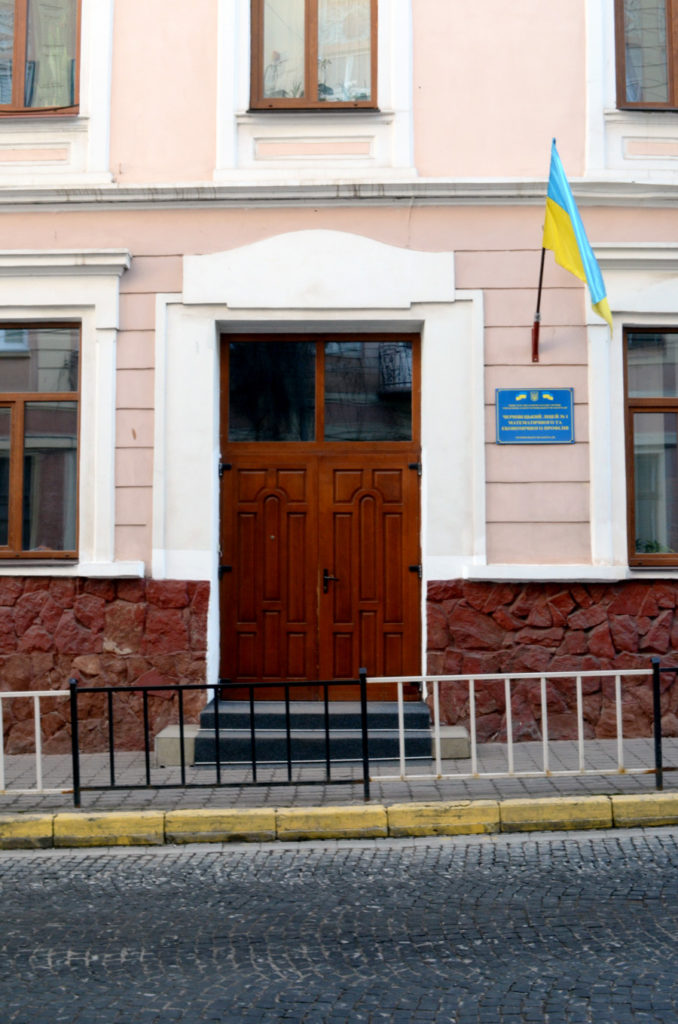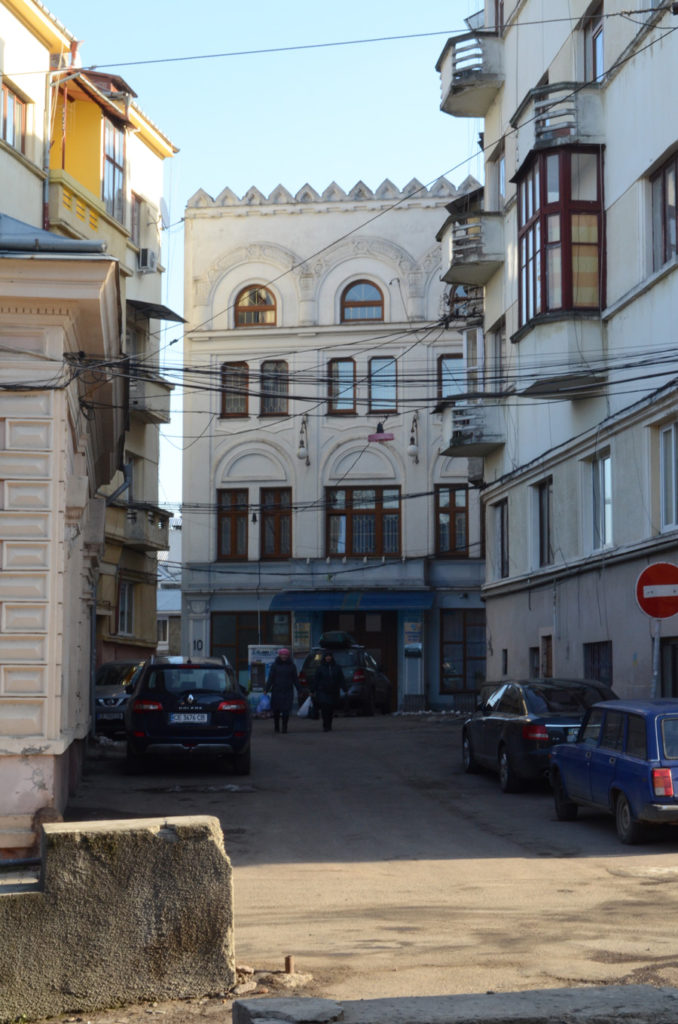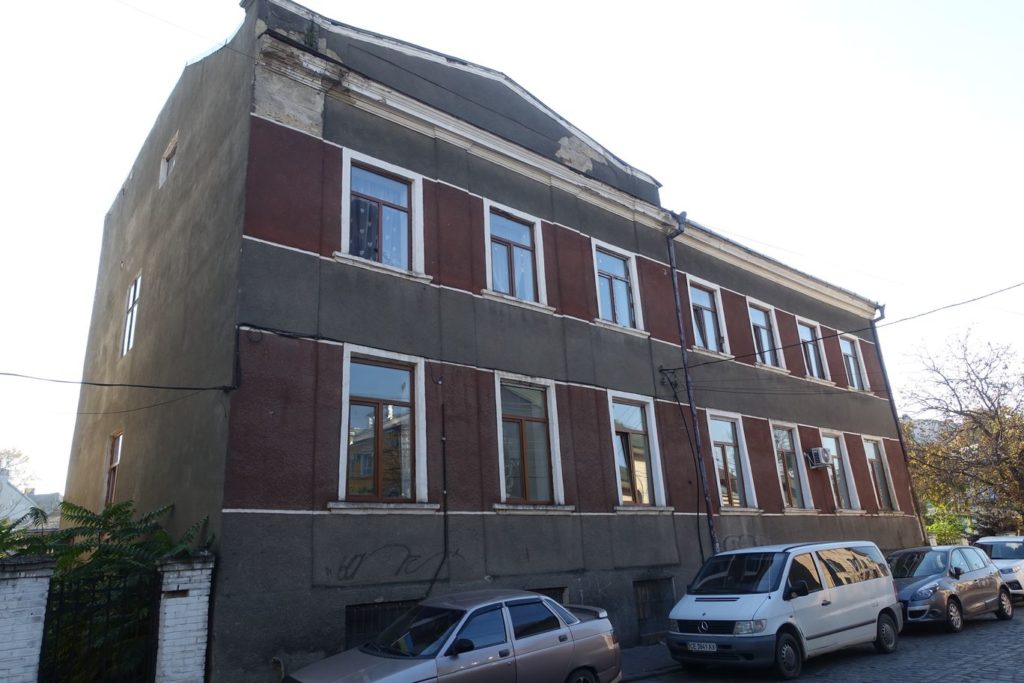
Former Maccabi sports ground
“My brother was a member of the Maccabi soccer team since he was ten. The team would even travel to Bucharest and play against Maccabi Bucharest.” – Sylvia Segenreich
Choose your language
Centropa’s AudioWalks take you on a journey through the Jewish history of Central and Eastern Europe.
Use our multimedia maps, and explore the family pictures, archival material, and personal stories of 21 Jewish Holocaust survivors to get a unique insight into Europe’s rich Jewish heritage, and to discover sites of Jewish life in towns in Moldova, Ukraine, Belarus and Lithuania.
Culture and education have always played an important role in multiethnic Chernivtsi, especially during the Habsburg era. Like Vienna, Chernivtsi had a flourishing coffeehouse culture: the city’s cultural life was shaped in places like “Café de l’Europe – today the former café is a popular restaurant, Panska Huralnya. This café, and other well-known cafés, were located on the pedestrianized Herrengasse (today Ol’ha Kobyljans’ka Street), which even today is great for a stroll.
As the city’s official language, German dominated everyday life and was used by most citizens. Large parts of the Jewish bourgeoisie, too, identified with the German-Austrian culture. At the end of the 19th century, Jewish students constituted the majority at Chernivtsi’s German high school, most Jewish children attended German-speaking schools, and Jewish newspapers and periodicals were usually published in German. The German-speaking bourgeoisie’s primary members were Jews, and many Jews became professors at the Franz Joseph University after its establishment in 1875.
Chernivtsi’s first official Jewish school was established in 1855, and in 1908, the Jewish National House was erected right next to the school, in today’s Theater Square. That same year, the world’s first conference for Yiddish language took place in Chernivtsi.
Along with rise of the Zionist movement came the establishment of Jewish cultural and education associations. While Safah Ivriah promoted the expansion of Hebrew, the cultural center “Toynbee Hall” was affiliated with the Zionist movement, and the Morgenroit Culture Center was aligned with the Social Democratic party. Even when the Habsburg Monarchy ended and Chernivtsi then belonged to the Kingdom of Romania, it remained a city of many languages. Iosif Bursuk, who was born in 1931 in Chernivtsi, shared his recollections with Centropa:
Before the war, all stores put up signs saying „ Customers are required to speak Romanian only“. At home we spoke Yiddish, on the street German, and in public schools Romanian.
An important element of the city’s Jewish culture was the Jewish theater. Iosif Bursuk remembers:
There was a Jewish theater in Chernovtsy. In 1937, when I turned six, my parents took me to a concert of Sidi Tal, a beautiful Jewish singer. She sang Yiddish folk songs. She was working at the Philharmonic in Chernovtsy. I have listened to her many times since then, but I will remember that first concert forever. My parents took us to all performances at the Jewish theater.
I also remember Purim and the overwhelming carnival that the whole town was involved in. Disguised people came to the houses and there were performances of the Jewish theater in the squares of the town that were attended by the whole population.
Melitta Seiler, born in 1929 also shared memories of her childhood in Chernivtsi in her interview with Centropa.
I went to the Jewish theater only once, when I was little. It was a big event, a very famous artist from the Yiddish theater was going to perform and sing as well, Sidi Tal. My mother took us girls to see her. She also took us to the cinema; we never missed a movie with Shirley Temple. After the Russians came, it was compulsory to go with the school to see Russian plays, Lev Tolstoy especially. I enjoyed them, too.

“My brother was a member of the Maccabi soccer team since he was ten. The team would even travel to Bucharest and play against Maccabi Bucharest.” – Sylvia Segenreich

Until the mid-19th century, Jewish children in Chernivtsi studied only in illegal religious schools. After a public education reform, the Jewish primary school opened in 1855.

Toynbee Hall opened in 1913 and soon became a hub for interwar Jewish culture. This is also where social and political meetings would take place – until it was closed in 1940.

Safah Ivriah used to be one of Chernivtsi’s major institutions to promote the Hebrew language before World War II. Its students included famous poet Paul Celan and Centropa interviewee Bruno Bittmann.

“Morgenroit” was an organization of “Bund”, the Jewish section of the Social Democratic Party, which established the Morgenroit Cultural House in 1908 as an educational and cultural center for Jewish workers.

This grand building opened in 1908, and soon became the home of Chernivtsi’s Jewish community and Jewish institutions. Today, it’s also the location of the Chernivtsi Museum of the History and Culture of Bukovinian Jews – and the starting place of this AudioWalk.
© 2022 Centropa & Project Partners. All rights reserved.
Privacy Policy / Cookie Preferences / Legal Notice & Photo Credits